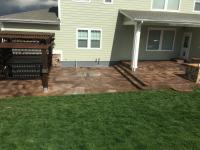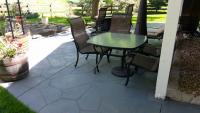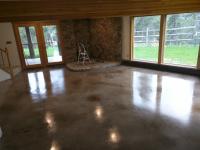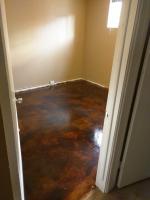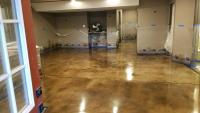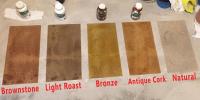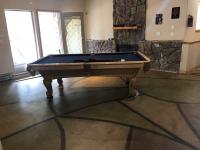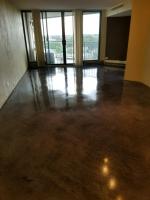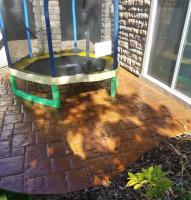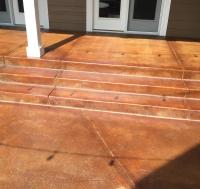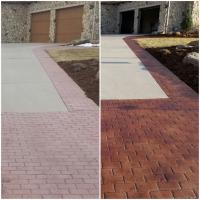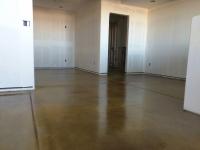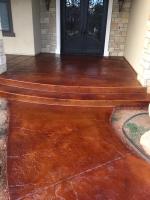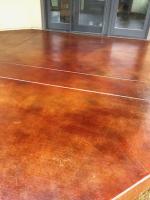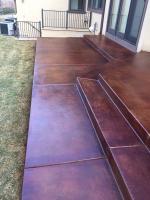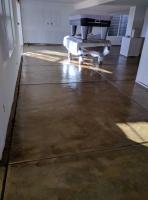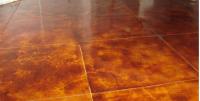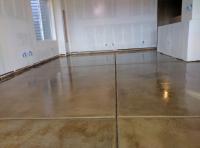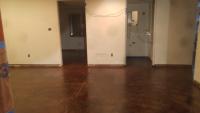AKA Stain & Seals
For our concrete staining jobs we use non reactive dyes that are environmentally friendly and non-toxic. Staining your concrete floor is becoming a very popular option for retail outlets, basements, patios, shops, and offices. For a durable concrete flooring option on a budget this is your best bet. We can stain your concrete floor with one or more colors followed by a clear coat to give you a matte or glossy sheen.
The procedure:
Our work typically begins by grinding down the top layer of your concrete. This is known as the cream coat. This serves to remove any residues that can cause problems as well as to allow the dyes and clear coats to properly bond. This is a mandatory process which lets the dyes properly soak into the concrete floor and allows for aggressive clear coat adhesion. The open pores and abraded surface then allow the clear coat to soak down into the small cavities formed when your concrete was curing and water was evaporating from inside. The coating interlinks with the concrete and hardens to form a strong bond. Doing proper preparation work is necessary for a successful long term concrete flooring solution. This allows us to warranty our work through the product manufacturers and give all of us a piece of mind that your stained floor will last. If your job is indoors we will top off your clear coat with a wax layer. This gives you a durable wear layer that you can easily build back up periodically so that you do not wear down your relatively more expensive clear coat.
For exterior slabs there are a few ways to go about properly prepping your concrete for a clear coat depending on whether you have a stamped surface, a broom finish, or a hard troweled finish with a cream coat. See the FAQ below for more information on this.
There are a variety of clear coats to choose from which will best meet your specific application and desired look. For residential basement floors we like to use a water vapor permeable clear coat that allows any possible moisture in the slab to slowly move through the coating and not cause adhesion or bonding problems. Despite the coating allowing vapor to pass through it, it still provides great protection from stains and would puddle liquids if spilled on it. Other clear coat options typically used for our commercial clients have higher resistance to abrasion, scratches, and caustic chemicals, yet arn't necessarily as water vapor resistant. There are a multitude of options for every floor and we aim at educating you as to what we feel are your top choices and why it is we recommend them. Please read further or give us a call and we can solve your flooring issue in no time.


